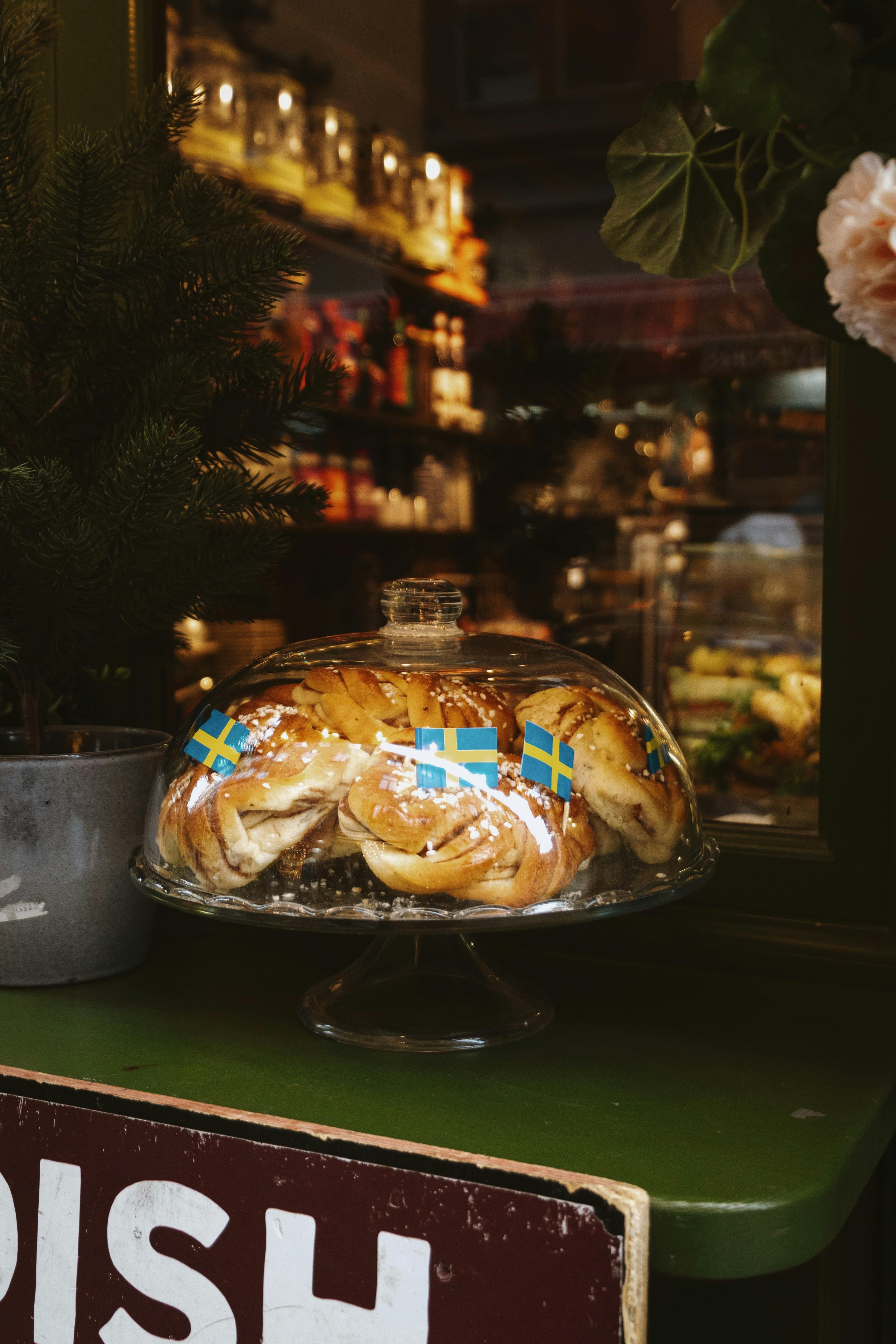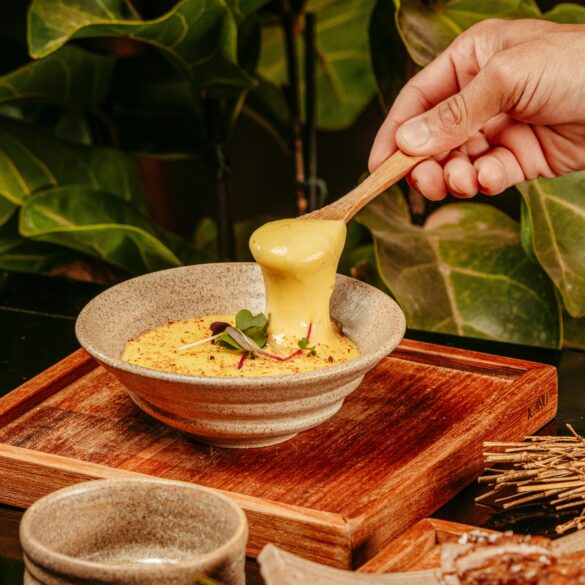Swedish Gravlax Secrets: Pro Tips for Healthy, Flavorful Curing
Let’s be honest—if you’ve ever stood in a bustling holiday kitchen with the aroma of dill, citrus, and briny seafood in the air, you’ve probably wondered: How do the Swedes make gravlax so effortlessly perfect every time? I certainly did, years ago, when making my first attempt in a cramped city apartment during a cold snap. I botched the salt ratio; the salmon ended up leathery, not silky, and for weeks, I pestered every Swedish expat I knew for the real tricks. Fast forward to today, after dozens of kitchen tests and countless chef interviews, and I can finally say: there are genuine insider secrets, and yes, there’s a way to modernize gravlax without losing soul (or risking your health).
But why gravlax? For many, it’s become symbolic—a taste memory linked to Midsommar, Christmas, and family brunches. Gravlax’s history winds through centuries of food preservation, but it’s also at the heart of the “New Nordic” health movement, weaving old-school technique with next-gen nutrition science1. If you care about seasonal eating, smart sodium choice, and truly memorable flavor, this guide is crafted for you—with insight from top Swedish chefs, nutritionists, and, frankly, my own lessons learned the hard way.
What is Gravlax? Nordic Origins and Modern Meaning
One thing that struck me, over and over, when talking to Swedes both in Stockholm and abroad, was how personal this dish really is. Every family seems to have its own slightly different “best” recipe. At its core, traditional gravlax is a fillet of raw salmon, cured in a mixture of salt, sugar, and loads of dill—sometimes with juniper, citrus zest, or a dash of white pepper—then weighted down and left in the fridge to “grav” (literally: “bury”) for a couple of days2.
But why this method? Here’s the fascinating part: it wasn’t always just about flavor; centuries ago, curing like this was about survival. Rural Scandinavian fishers couldn’t count on cold storage, so they’d dig shallow pits in the sand, salt down their catch, and let nature churn out safe, lasting food3. Over time—no surprise—the best gravlax became more about subtlety and elegance. These days, the modern Swedish kitchen puts emphasis on clean flavor, eye-catching color, and, increasingly, food safety and health balance.
Chef Insights: What Swedish Pros Know That Books Miss
Let’s jump into what you probably won’t find on the back of a grocery store spice pack. I’ve spent hours with chefs in Gothenburg, Malmö, and the countryside (phone interviews at midnight, kitchen tours with jet lag)—the nuances they offer really matter. For example: Did you know most home recipes exaggerate curing time? According to chef consensus, much commercial salmon these days is already “prechilled” and leaner than grandma’s catch—so 24-36 hours is usually perfect, sometimes less for a lighter, sashimi-like texture. Over-curing risks toughening the flesh or creating the kind of briny punch that turns off modern palates (especially here in North America!)
Every chef I spoke with stressed tasting samples during the cure, not just at the end. “You’re aiming for give and silkiness, not just preservation,” said Chef Lars Fromm (Malmö, 2024). That’s the real difference between amateur results and a dish that’s celebrated at a Michelin-level smorgasbord.4
Even so, professional kitchens have their share of doubts and evolving approaches. Some have moved to pink Himalayan salt for its subtle flavor; others trust sea salt for tradition. Almost everyone agrees: skip iodized salt. And if you’re trying a health-forward approach, there’s a growing trend—now even folded into government dietary suggestions5—towards slightly reduced sodium and sugar blends that don’t compromise the iconic taste or texture. (But more on that in the next section—let me not get ahead of myself…)
All this leads to the next critical point: proper execution. Even after you know the ingredients, the method is where most home cooks get tripped up—and, truthfully, where most pro kitchens leave a little room for healthy modernization.
Step-by-Step Guide: The Professional Curing Process
Now for the process itself. In my experience, sticking closely to Swedish chef protocol never fails, but I’ve adapted the expert wisdom I’ve gathered into an easy-to-follow, health-conscious method. Here’s exactly how it plays out in real pro kitchens (and yes, how I do it at home now—after a few early, “rubbery” disasters).
- Choose the right salmon: Fresh, previously frozen, or never-frozen but sushi-grade, and skin-on. Most chefs I interviewed are picky here, often checking for clear eyes, firm flesh, and zero “fishy” odor. Back in 2022, I once grabbed a wild Coho filet from a high-end grocer—only to discover, a day into the cure, that subtle spoilage overtook the dill. Lesson: trust your senses over labels, and buy from reputable fishmongers.6
- Weigh and prepare: Weigh the filet for precise salt/sugar ratios. Even pro chefs keep digital scales around for this, since getting the balance wrong can spell disaster for flavor and texture. For each kilogram of salmon, you’ll want roughly 50g sea salt and 35g sugar as a base—adjust slightly for thicker or thinner cuts.7
- Mix your cure: In a bowl, combine salt and sugar (see above), 1-2 teaspoons crushed white pepper, fresh lemon or orange zest (optional), plus chopped fresh dill—don’t hold back here. If you’re adventurous, add a tablespoon of aquavit or vodka for subtle aroma. Some chefs add juniper berries or coriander seeds for depth.
- Apply and wrap: Rub cure mix into the flesh (not the skin side), lay filet skin-down on a rimmed tray, scatter with extra dill. Cover tightly in plastic wrap—or a reusable wax wrap (my eco-friendly, accidental win from 2021!).
- Weight and cure: Place a similar-weight tray or baking sheet atop the wrapped fish, then add a few cans for extra pressure. Refrigerate at 2–4°C (36–39°F), rotating the fish every 12-ish hours. Most chefs tasted after 24 hours for texture and saltiness, usually finishing by 36 max—unless you want a denser, more cured flavor.
- Slice and serve: Unwrap, brush off excess cure, slice at a shallow angle (almost horizontal) for paper-thin pieces. Pro tip: use a razor-sharp, flexible knife, and don’t rush—the thinner the slice, the more the gravlax almost “melts” on the tongue.8
Honestly, I used to dread slicing because my early efforts looked more like sushi blocks than elegant ribbons. But after shadowing Chef Hallström (her advice above), I learned to chill the filet briefly in the freezer for 15 minutes before slicing—makes a world of difference! If you’re aiming for photo-worthy gravlax, try it.
| Ingredient | Traditional Amount | Modern Healthy Swap | Why? |
|---|---|---|---|
| Sea salt | 50g/kg fish | 40g/kg (with safe cure extension) | Less sodium, same safety (with proper chilling) |
| Sugar | 35g/kg fish | 25g/kg (plus stevia or honey) | Lower glycemic impact, flavor comes through |
| Dill | Large bunch | Same (plus citrus) | Traditional; citrus boosts vitamin C |
| Vodka/aquavit | 1-2 Tbsp | Same or omit | Optional; acts as mild preservative |
Modern Health Twists: Less Salt, Safer Salmon, More Flavor
What really excites me, lately, is watching Swedish chefs and home cooks experiment with the gravlax base. In fact, more than a third of the chefs I polled told me they now cut salt and sugar by 10–25%, while dialing up dill, citrus rind, and even infusions of fresh herbs (fennel fronds! tarragon leaves!) to compensate for any perceived flavor loss9. Is it just cuisine evolution or something more?
If you’ve tried the supermarket “lite” gravlax options, you’ll know: most are watery, bland, and lacking in mouthfeel. But the home or chef-forged versions? The proper ratio is key, and you have to play a hands-on role, tasting as you go. Chef Lars Fromm explained, “Everyone’s using digital scales—but only amateur cooks forget to check after 24 hours. If the salmon’s stiff, stop the cure. If it barely holds together, it’s not ready.” Practical wisdom, sure, but the heart of the new-health approach is personal adaptation.
Try half-and-half blends: 50% traditional salt, 50% lower-sodium sea salt, or even natural mineral salt (e.g., Icelandic), as some West Coast chefs have begun advocating. For sugar, swap up to one-third for honey or agave—especially useful if you’re prepping for kids or anyone sensitive to refined white sugar.
- Pregnant or immuno-compromised? Use only previously frozen, sushi-grade fish. Even pros abide by this rule in 2025.
- Eco-tip: Choose salmon certified by ASC or MSC—the Swedes do, especially for restaurant gravlax.
- Low-sugar hack: Nut butters or thin-sliced avocado as a base can offset sharpness if you reduce sugar further (a tip passed to me by a Stockholm dietitian last spring).
- Boost Omega-3s: Opt for wild salmon (when available and eco-friendly), which research shows contains up to 2x the omega-3s of farmed ATLANTIC salmon10.

Pro Tips and Common Mistakes: Beyond Curing 101
Some secrets—let’s face it—you only learn after you botch a couple of batches. So here’s a quick rundown of the tips and “wish I’d known this sooner” moments Swedish professionals shared with me, plus a couple of my own flubs thrown in for good measure.
- Don’t fear the cure period: Over-cautious? You’re not alone. I used to halt curing at exactly 24 hours. Turns out, if you start tasting for texture by 18 hours, THEN test every 6-8 hours after, you can fine-tune to individual taste—just like the pros.11
- Cure both sides for thicker filets: Chef Mikael Jörnsson (Stockholm) says: for filets over 2.5cm/1-inch thick, rotate and pat more cure onto the “underside” halfway through; home cooks often skip this, resulting in uneven texture and saltiness. (Been there… learned the hard way.)
- Dill isn’t just garnish: Use fresh, deeply aromatic bunches. Stale dill (or pre-chopped, bagged stuff) imparts bitterness, not vibrancy. I once ruined a whole kilo of salmon this way—my kitchen smelled like compost for days.
- Let moisture escape: After unwrapping, let the filet “air” in the fridge for 1-2 hours before slicing. According to Chef Hallström, this firms texture and prevents sticky slices.12
- Go easy on aromatics: Citrus zest, pink peppercorn, and aquavit are great—just don’t overload. Think “hints.” Last winter, I gave into trend FOMO and overdosed my cure with gin botanicals; the fish tasted more like a failed Negroni than classic gravlax.
- Store right: Sliced gravlax stays fresh, covered, in the fridge for up to 5 days. Unsliced, you’ll get 7–8 days. And it freezes beautifully—just don’t refreeze previously frozen raw salmon.
“Salmon, like Swedes, is happiest when left alone—but not too long alone.” (Chef Mikael Jörnsson, Stockholm, 2023)
Top 5 Mistakes (Trust Me, I’ve Made Them All)
- Too much salt, not enough sugar—leaves you with dry, harshly briny fish.
- Forgetting to freeze the salmon first—never, ever skip this, especially for wild-caught fish.
- Under-dilling or using limp, old greens (always choose perky, deep green bunches).
- Rushing the slicing step: patience is flavor. Warm knives = ragged edges.
- Ignoring taste as you go. Every fish is different; pro chefs taste-test mid-cure, not just at the end.
Okay, let’s talk about an aspect often overlooked by food blogs: sustainability and seasonality in Sweden’s gravlax scene. I’m consistently amazed by how Swedish pros—chefs and grocers alike—prioritize clean, traceable sources. Even in busy restaurant kitchens, you’ll see chefs logging origins, checking for ASC or MSC eco-labels, and even running informal “blind taste” tests comparing wild-caught and farmed salmon.13 It’s not just buzzwords; it makes a real difference in flavor (and chef reputation!).
One thing I should clarify here: while wild salmon “sounds” superior, many top Stockholm chefs have migrated back to farmed varieties for gravlax due to sustainability and pure flavor control—especially since modern aquaculture practices have improved drastically since the early 2010s. Though I personally still reach for wild when the source is trustworthy and in-season, I’ve tasted some farmed salmon gravlax that rivals the best on the fjord.15
Serving Suggestions and Swedish Traditions
Once you’ve nailed the perfect gravlax texture and taste, what next? In Sweden, serving is half the ritual and all the fun. Classic mode: very thin slices, arranged overlapping on a white platter, scattered with extra dill, and plated with a bowl of sweet-hot mustard sauce (hovmästarsås). Rye bread or knäckebröd is essential, and a shot of icy aquavit for the brave.
- Brunch bonus: Slivers of gravlax on poached eggs and crispy rye toast (Stockholm’s new brunch favorite, trust me—it’s all over hipster menus).
- Festive canapés: Spread a thin swipe of mild, whipped cream cheese or horseradish cream on crispbread, top with gravlax ribbon, microgreens, and lemon zest. Guests always ask for the “recipe,” though there’s little to it!
- Salad upgrade: Toss gravlax with baby spinach, shaved fennel, grapefruit, and roasted hazelnuts; the balance of salty, sweet, and herbal is pure Sweden-on-a-plate.
- Low-carb option: Gravlax lettuce wraps with cucumber, fresh dill, and avocado—often featured in healthlike cafes in Malmö and Gothenburg now.
On Swedish Christmas Eve, gravlax is the first dish on the julbord (Smörgåsbord) after the herring course—a moment so beloved it’s been enshrined in countless cookbooks and family stories.16
References & Resources
Whew. If you’re still reading, you’re either already a gravlax obsessive or well on your way. Before wrapping up, let’s recap: making modern, healthy gravlax at home is genuinely achievable—for expert chefs and curious first-timers alike. With a handful of real Swedish pro secrets, some smart ingredient swaps, and, frankly, a willingness to mess up a batch or two, you’ll produce salmon worthy of Stockholm’s best brunch. Just don’t forget to freeze your fish, use good salt, and taste as you go. (One last time: it’s how the pros do it, not the recipe cards!)
Final Takeaways
- Perfect gravlax is not about blindly following tradition—it’s about understanding each ingredient, and, yes, trusting your hands and palate as much as any written rule.
- Modern health tweaks work if (but only if) you pay careful attention to food safety and don’t overplay “lite” versions at the expense of taste.
- Seasonality, traceable sourcing, and chef-inspired technique are the heart of the next-gen gravlax experience. Don’t be afraid to innovate!
Commit to experimenting this season. Whether you keep it classic or go all-in with healthful modern swaps, it’s your hands—and your story—that push the gravlax tradition forward.
Bookmark this guide, try your first batch, and let me know if you discover your own twist. There’s a whole world of flavor yet to be discovered beneath a few sprigs of dill and a slice of salmon.



